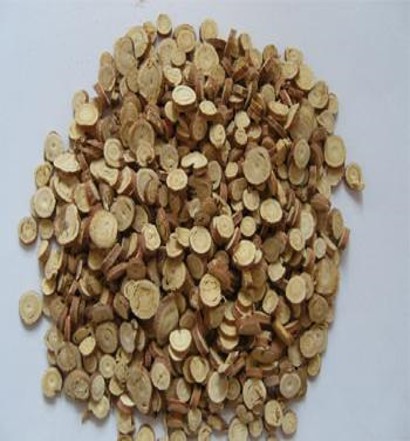| Origin |
The dried root of Glycyrrhiza uralensis Fisch., Glycyrrhiza inflata Bat. or Glycyrrhiza glabra L., family Leguminosae.
|
| Function and treatment |
Tonifying the spleen and benefiting Qi, clearing heat and detoxifying the body, dispelling phlegm and relieving cough, relieving urgency and pain, and harmonizing various medicines. Used for weakness of the spleen and stomach, tiredness and fatigue, palpitation and shortness of breath, cough with phlegm, contracted pain in the epigastrium and extremities, carbuncles and sores, and to relieve drug toxicity and potency. |
| Origin and best harvesting period |
Licorice likes arid climate, suitable for growing in sandy soil or sandy loamy soil, but should not be planted in areas with high water table. It is mainly produced in the northeast of Inner Mongolia and the northeast of Inner Mongolia, and in the west of Inner Mongolia, southern Gansu, eastern Qinghai, Shanxi and northern Shaanxi. The best quality of this product is produced in the Hangjin Banner of the Ikezhao League in Inner Mongolia. It is harvested in spring, and in the wild in autumn, and in cultivation 3 to 4 years after sowing, in spring and autumn, with the roots removed and dried in the sun. |
